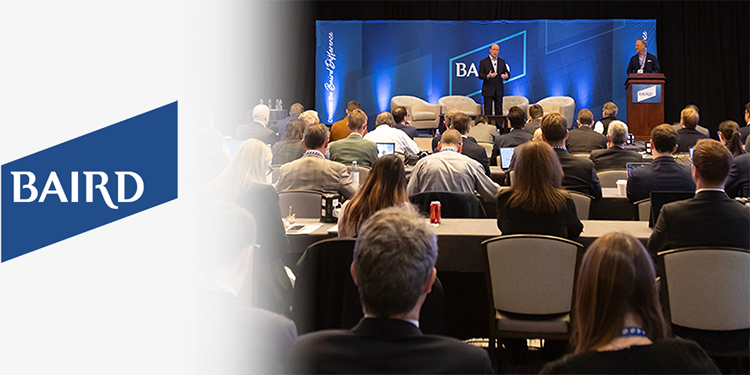Survey: 73% of Firms Struggle to Get Workers Back in Office – RVBusiness – Breaking RV Industry News

NEW YORK – As COVID-19 changed workers’ expectations about where they can do their work, a new survey reveals that companies are struggling to get staff back into the office.
Indeed, 73 percent of organizations surveyed report challenges getting workers to return to the workplace. Because of this pushback, 68 percent are considering or implementing talent strategies to increase on-site work.
The survey, conducted by The Conference Board, also reveals the push for on-site work may be hindering efforts to retain workers. 71 percent of respondents from organizations that are mandating their on-site work policy reported difficulty retaining workers.
The survey highlights the multiple competing objectives among which HR leaders must strike a delicate balance. As organizations navigate the world of work in the pandemic’s aftermath, they must contend with rising uncertainty about the long-term impacts of remote work on productivity and profitability, an economy with elevated inflation and recession risk, and an ongoing labor shortage.
This survey of 185 US Human Resource executives was conducted from April 25 through May 14, 2023. It is the fifth survey in the Reimagined Workplace series, which explores the long-term impacts of the pandemic on both the workforce and workplace. Insights from the survey include:
Businesses report difficulty enticing workers to return to the office.
- 73 percent of HR leaders surveyed report difficulty enticing workers to return to the office.
- Getting workers to return to the office was the second most difficult objective respondents reported, exceeded only by finding qualified workers (80 percent).
Most businesses are trying to increase on-site work.
- 68 percent of organizations surveyed are considering or implementing talent strategies to increase on-site work.
- Team building and celebratory events top the list of strategies:
- Team building and celebratory events: 62 percent
- Flexible days/hours: 59 percent
- Relaxed casual dress code: 56 percent
More than half of workers still work remotely at least part of the time.
- 56 percent of workers continue to work remotely at least part of the time, according to surveyed HR leaders.
- 76 percent of professional and office workers work a hybrid or remote schedule.
“To attract and retain talent, the C-suite will need to develop policies that balance workplace flexibility with the cultural and social benefits of on-site work,” said Robin Erickson, PhD, Vice President of Human Capital, The Conference Board. “While every organization is different, hybrid work is the likely solution in many instances. And, as these survey results make clear, offering hybrid work is a critical tool in the toolkit for attracting and retaining workers, especially amid a strong labor market that continues to defy expectations.”
Organizations are having major difficulties finding and retaining workers.
- 88 percent of organizations employing mostly manual services workers report difficulty finding qualified workers.
- 75 percent of organizations employing mostly office workers report difficulty.
- 68 percent of organizations employing mostly manual services workers report difficulty retaining workers.
- 54 percent of those employing mostly office workers report retention difficulties.
Organizations mandating on-site work have much greater difficulty retaining workers.
- 71 percent of respondents from organizations that are mandating their on-site work policy reported difficulty retaining workers.
- That’s compared to 46 percent that give workers a choice of where to work.
- Voluntary turnover among fully on-site workers has increased 26 percent in the last six months, twice the rate of increase among fully-remote workers at 13 percent.
Remote work may not be to blame for decreasing US productivity.
- US labor productivity peaked in 2021 when 38 percent of all US workers were remote.
- As remote work has declined, so has productivity.
- It is too soon to say whether any apparent correlation between remote work and productivity is causal.
Employee well-being, including mental health and sense of belonging, are suffering.
- 43 percent of surveyed HR leaders report decreased employee mental health from six months ago.
- 32 percent report decreased sense of belonging/inclusion.
- 31 percent report lower levels of employee engagement.
- 30 percent report a decrease in employee intent to stay.
Businesses are—or soon will be—cutting costs.
- 29 percent of respondents report that their organization had implemented layoffs in the last six months.
- 19 percent report that they expect to implement layoffs in the next six months.
- Implemented layoffs were most prevalent in information services, publishing, and telecommunications; health care and pharmaceutical; and manufacturing.
- Layoffs expected in the next 6 months are most prevalent in retail, wholesale, travel, and entertainment; information services, publishing, and telecommunications; and manufacturing.
Employee well-being has declined more in organizations that recently implemented cost-cutting measures.
- Of organizations that have implemented cost cutting measures, 46 percent report a decline in employee mental health, compared to 36 percent who have not cut costs.
- 37 percent of organizations who have cut costs report a decline in employee sense of belonging, compared to 26 percent of those who have not cut costs.
- 36 percent of organizations who have cut costs report a decline in employees’ intent to stay, compared to 22 percent of those who have not cut costs.
The Conference Board also recently conducted a complementary survey of 2,000 US respondents, the results of which help inform companies’ strategies to keep employees satisfied in a competitive labor market while effectively fostering innovation, creativity, efficiency, and value creation.
“In our research, we found that, in general, employees feel that fully-remote work is best for their own productivity, but that hybrid work best supports their company’s productivity,” said Denise Dahlhoff, PhD, Senior Researcher, Consumer Research, The Conference Board. “To address concerns about reduced flexibility, organizations can emphasize the advantages of working on-site, such as increased networking opportunities, relationship building, collaboration, and career growth.” Read the separate survey here.
About The Conference Board
The Conference Board is the member-driven think tank that delivers trusted insights for what’s ahead. Founded in 1916, we are a non-partisan, not-for-profit entity holding 501 (c) (3) tax-exempt status in the United States. ConferenceBoard.org
Source: https://rvbusiness.com/survey-73-of-firms-struggle-to-get-workers-back-in-office/







